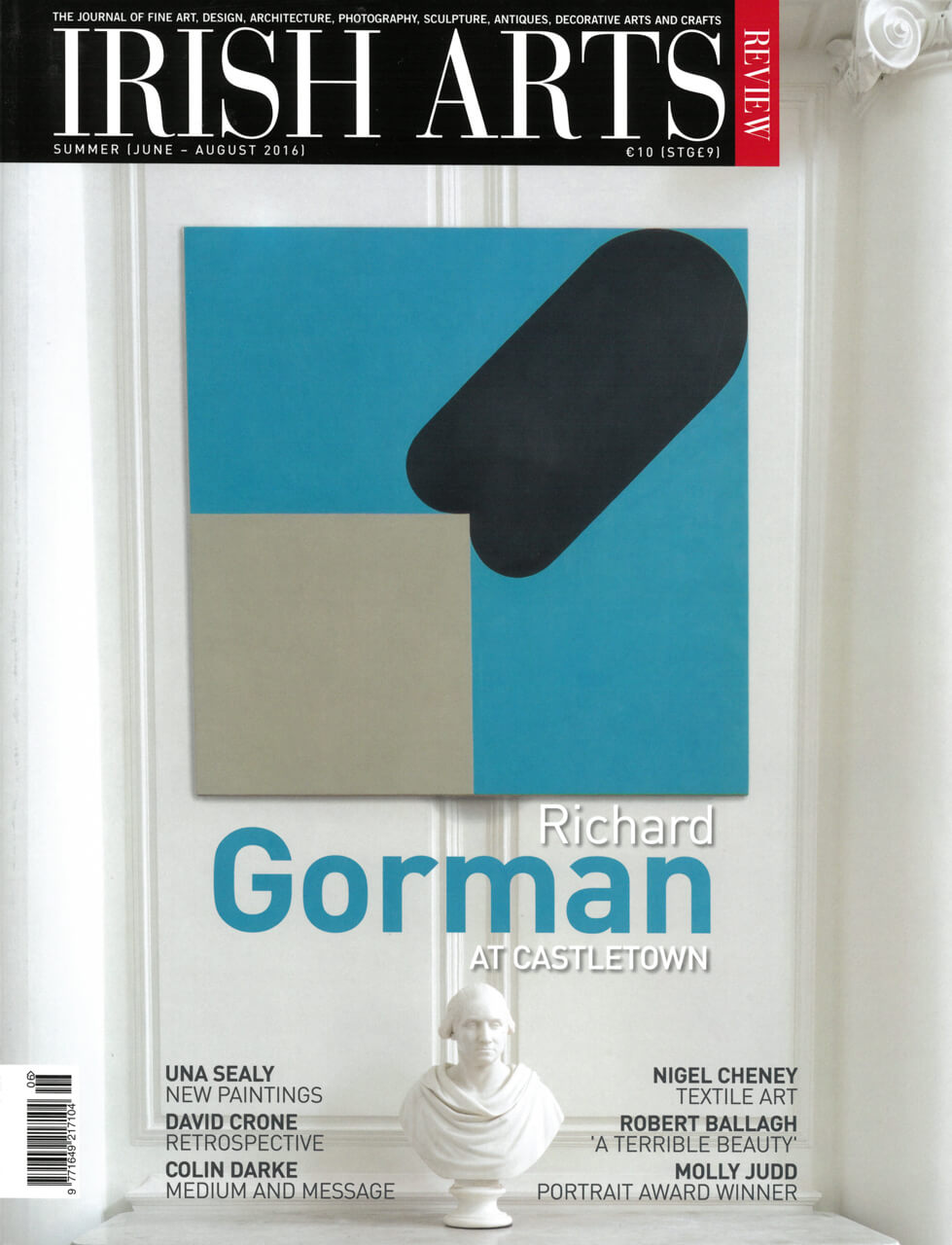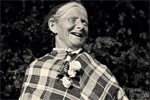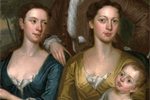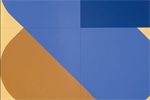
Paul Caffrey explores the sumptuous work of Ireland’s influential textile artist Nigel Cheney.
Nigel Cheney combines superlative drawing skills with complex embroidery techniques to create richly surfaced textiles that range in size from the miniature to the gigantic. He is dedicated to his art-form and is extremely productive in the quantity of the intricate work that he produces. His chosen medium is textiles which are often first printed with hand drawn or photographed images. These collaged fragments are then covered in hand sewing using traditional embroidery stitches and then elegantly combined with computerized machine sewing. He is adept as a colourist using a variety of shades of thread which are sewn in a subtle density of stitches. The threads combine to give the surface of his work a three-dimensional quality. These large textile pieces are worked on Irish linen (made by Ferguson’s) and have a tactile quality. They are displayed unframed as hangings and are designed to be handled and touched.
The textiles are technically and visually arresting. There is a tension between the great attention to detail in the minutiae of the hand stitching and the themes he explores. These large pieces explore complex subjects which are full of ambiguities. Images are drawn from a broad range of influences taken from sources in literature, museum archives, military history, popular culture, music, cinema and television. Cheney is particularly interested and inspired by the history of lace, heraldry, medals, banknote design and in the many varied techniques of embroidery. He has been influenced by family connections in the textiles industry, the navy and the armed forces whose uniforms he has unpicked to reveal the complexities of construction employed by military tailors and outfitters. Portraiture is a constant theme and he plays with ideas of masculinity and identity through his explorations of images inspired by war and role of men in textile history. Irish identity has surfaced in work based on an interpretation of the Déanta i n√âirinn symbol which was designed by Sarah Purser.
Cheney’s compositions have been inspired by such diverse sources as Albrecht D√ºrer prints, the fantasy world created by Marc Chagall in his series of etchings of The Fables of La Fontaine (1927-30) and Paula Rego’s engravings of popular nursery rhymes. Illustrations of fairy-tales, mythology, and folklore also appear in his work. At present he is working on some large- scale pieces which will form part of an exhibition of work that commemorates the quatercentenary of the death of Shakespeare ‘Then and Now‚’ at Farmleigh from August until October 2016. In other works he explores the theme of the Forest of Arden in As You Like It which has been developed in complex and highly ambitious pieces. Human characters and personalities are transformed into animals and birds which appear in every guise and are vehicles for the narrative which is set in a mythical landscape dotted with exotic trees and plants. As in Aesop’s Fables they may be read on many levels. Hares, pedigree dogs, a bear or a rhinoceros are embued with disconcerting human, mythological or national characteristics which reflect a greater truth or poke fun at the viewer. Cheney has also examined the Machiavellian themes in Richard III. He has contrasted the historical and literary constructions of Richard III with the recently discovered skeleton and archaeological evidence of his life and death.
He is interested in the Irish Arts and Crafts Movement and he addresses the aristocratic traditions of decorative embroidery in a tribute to Julia Carew and Jane Cory (see Irish Arts Review Winter 2016). He has been influenced by a set of Tree of Life decorative embroidered panels that were designed for Lady Carew for Castleboro, Enniscorthy, Co Wexford and are now in the collection of Girton College, Cambridge. Cheney has produced a vast coat (4 metres x 1.25 metres) which is decorated with hand and machine embroidered panels depicting scenes associated with the Lethbridge sisters, such as a King Charles cocker spaniel (Poppy) and a portrait miniature (Fig 2). The piece took over four months to make and about 80 hours of hand and free machine embroidery.
Nigel Cheney’s achievement lies in his ability to fuse a very fine panoply of technical skills in combination with themes and sources in contemporary forms to create works of textile art which are of and for our time.
Nigel Cheney ‘Now and Then‚’ Farmleigh Gallery, Dublin, 26 August -9 October 2016.
Paul Caffrey is a research fellow and lecturer in the history of art and design at the National College of Art and Design.



